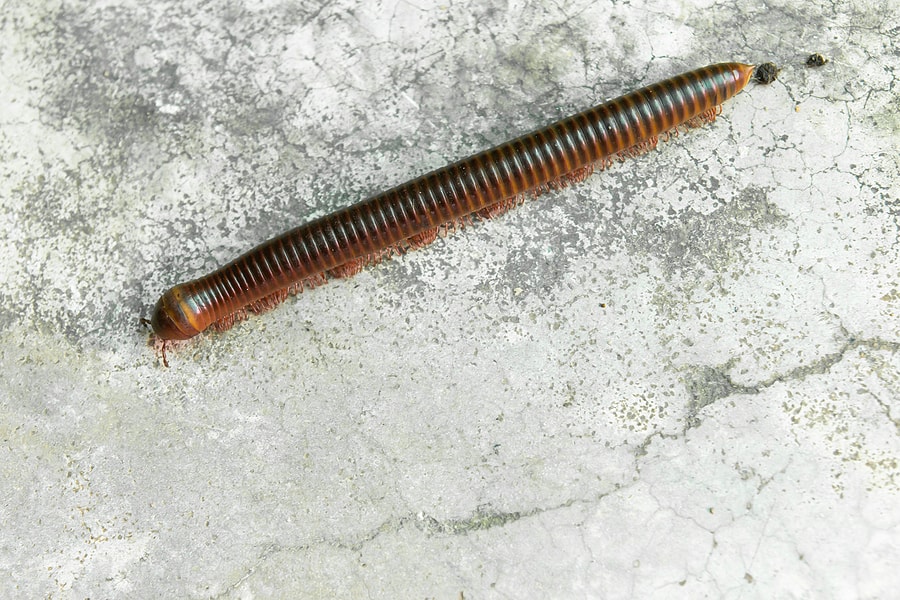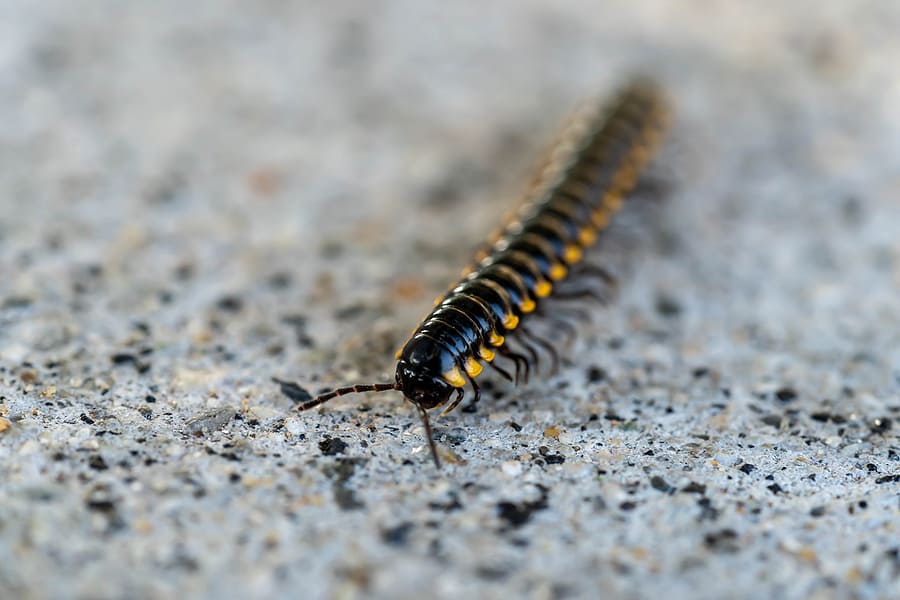READY TO GET STARTED?
REQUEST A FREE ESTIMATE
Fill out the form below or call (888) 466-7849 for a free, no-obligation estimate.

While often mistaken for each other, millipedes and centipedes are distinctly different pests. Although commonly referred to as insects, they are actually not – in fact, they are more closely related to lobsters and shrimp. Centipedes have bodies composed of many segments with one pair of legs on each segment. These long legs extend from the sides of their bodies and trail backwards behind them, making them very visible. Millipedes, on the other hand, are the opposite. These arthropods have only 1 pair of legs on their first 3 body segments but then two pairs of legs for each body segment after those. Their legs are shorter and do not trail behind their bodies like centipedes do.
Both of these land dwelling creatures prefer moist environments with high humidity. Most are nocturnal, as well. While neither carry diseases that can harm humans or pets, they can be a nuisance when they make their way into your home. Centipedes can bite, although this is rare. They do have poison glands and can cause skin irritation when a bite occurs. Millipedes feed on stems and leaves and can cause damage to gardens. They can also leave a stain if crushed. Both species can be a nuisance when they invade your home in large numbers.
Although there is no set season for millipedes and centipedes, they do come out in large numbers twice per year: in the spring when they lay eggs and in the fall when they prepare to overwinter.
Preventing centipedes and millipedes can be accomplished with these tips:
Do I Need Termite Treatments in the Winter?

Millipedes are long, wormlike animals that are also referred to as worms, wireworms, and armyworms. While often mistaken for centipedes, millipedes are smaller (1 to 1-1/4 inches in length) with dark brown coloring and shiny, hard shells. They have long cylindrical bodies and have a habit of curling into a ball when they are disturbed. While the name millipede might imply they have thousands of legs, in reality they typically have 4 legs per body segment and at least 60 legs total, although some species can have up to 160 legs. Millipedes are harmless to humans as they cannot sting or bite. They also do not feed on plants or wooden structures. What they do feed on is decaying plant material and prefer damp, moist environments where they thrive. They are often found under leaves, plant debris, mulch, pine needles and other similar habitats.
While there is no set millipede season, they do go on mass migrations twice per year – once in the spring and once in the fall. These usually occur on warm, humid nights where they will emerge by the hundreds. Millipedes are outdoor pests so finding them inside your home means they have wandered in by mistake. In fact, millipedes cannot reproduce indoors. When these pests do make their way indoors, they are often found in garages and basements. Millipedes are nocturnal when they wander out of their hiding places roaming aimlessly. They eventually crawl back into holes or cracks (oftentimes in our homes) to escape the dryness of the impending daytime. They can often be found hiding under the edge of the garage door, in cracks along the exterior of your home, in sidewalk or driveway cracks, and in the gaps of your foundation.
Although millipedes are harmless, they can become a nuisance when they make their way into your home en masse. While there is no definitive millipede control method, the best practice is to try and keep them outdoors as best as possible. Because they often wander in through cracks and gaps, make sure these and other entry points around doors, windows, and foundations are sealed. They feed on organic material so keeping mulch, pine needles, and dead leaves away from your home will also help. Ensure gutters are not clogged and downspouts are angled away from foundations as this dampness will attract them in droves. Using insecticides on millipedes indoors is usually considered unnecessary as they will die in a short period of time due to lack of moisture. The best option to get rid of them indoors is to sweep or vacuum them up and discard them. Once the cold weather hits, they will become dormant… at least until springtime rolls around again!
If you have a problem with millipedes or any other household pests, contact your local pest control company for a free analysis.
Spring Cleaning to Keep Pests Out
Termite Control: Protecting Your Home From Termite Damage